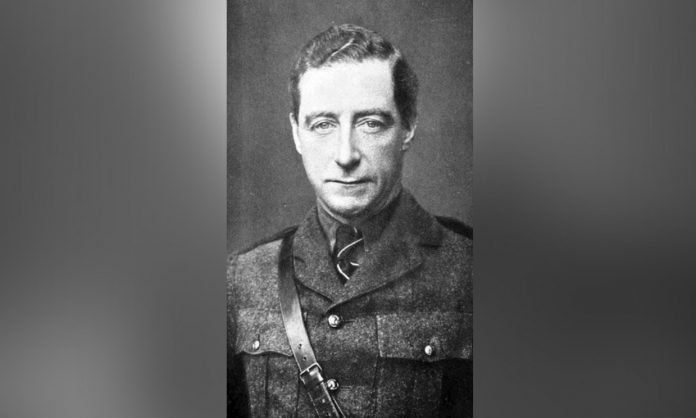By Padhraic Haughey
Cathal Brugha was a man of faith; a daily communicant; a courageous soldier and an able statesman. In most well-known histories of the period Cathal is painted in a negative way but there is quite an amount of literature and personal testimonies which are little known, that paint a much different picture.
The political history of Ireland since the Treaty clearly shows us that trampling on the truth, honour, sacrifice and principle of the men and women of 1916 ends in a gory mess.
Father Tomas Breathnach was in the Hammam buildings with Cathal and a number of other men and women. In an interview in 1996 shortly before his death he said that he did not have words to express his admiration for Cathal.
When the building was set on fire and their position was becoming untenable he asked him what did he think of his former comrades now? He was astonished by his reply that he did not blame them for what had happened, because he said, England and England alone were responsible for this split.
It has been alleged that there was conflict between him and Michael Collins. There were, according to Micheal O Cuinneagain in his book ‘On the Arm of Time’ good grounds, for his distrust of Collins. He had taken over the IRB when its work was completed and the First Dáil of which Cathal was Minister for Defence, rightly claimed the allegiance of the Volunteers and Cathal required them to take an oath to serve the Republic, the legally elected government of All Ireland.
Another oath to a secret organisation, which had already completed its work, was a threat to the Irish Republic, which is what eventually happened, when the vote on the Treaty in the Second Dáil in 1922 was being taken, Collins used his authority as the head of the IRB, to order members of the IRA to vote for the Treaty. General Tom Maguire is on record as having revealed this in an interview with Ruairí Ó Brádaigh.
Collin’s friendship with the Moya Llewelyn Davies, who with Lady Lavery belonged to the London Aristocracy and were Lloyd Georges society hostesses also worried Cathal. Crompton, Moya’s husband, was appointed Solicitor General of the Post Office.
They had a house in Dublin, in Furry Park, Raheny. When Compton was sacked from his job as Solicitor General of the Post Office over his wife’s Republican activities, Collins proposed that the government should reimburse him for loss of his salary. It was turned down. Moya had two children Richard and Katharine.
Geoffory Green published his autobiography ‘Pardon Me for Living’ in the 1980’s and to get publicity he had an article in the Sunday Independent with the caption, “Did Michael Collins have a sporting son?”
This explains why Sean Dowling in 1978, a member of GHQ staff in 1916 said Collins was blackmailed into signing the Treaty. Erskine Childers secretary to the delegation told him, that Collins was not going to sign the Treaty until Lady Lavery and Moya came to the hotel and brought him to Lavery’s house.
When he came back Erskine said he was a changed man and he was now willing to sign the Treaty. Sir John Lavery in his autobiography ‘The Life of a Painter’ says that his wife Hazel convinced Collins to sign the Treaty. Also, the circumstances of Collins death have emerged as related to these events on 6th December 1921. He was never happy with the Treaty, so his colleagues in the government did not trust him.
He was determined to overthrow the ‘Northern Ireland Parliament’ and was arming the Republicans in the North and had planned a rising in May 1922. It was called off at the last moment by people who supported the border.
So, there is strong circumstantial evidence for believing that he was assassinated by members of his own Free State Army. Rex Taylor was threatened with physical harm in 1959, if he delved into the mystery of Collins death. His colleagues in government blamed Collins for the assassination of Field Marshall Sir Henry Wilson.
They knew that he asked the cooperation of Liam Lynch, leader of the Republican Army, to help him rescue Dunne and O’Sullivan who carried out the assassination. Commandant W.J. Brennan Whitmore who took part in the Easter Rising, was a close friend of Collins. He claimed Captain Emmet Dalton was responsible for Collin’s death. He said in a letter to the papers that “The assassin made the mistake of holding the gun too close to Mick’s head, so the hair was scorched.” Captain John Feehan in his book on Collins, agrees with this.
So Cathal Brugha’s reservations about Michael Collin’s weaknesses were well founded. Cathal Brugha exited the Hamman Building by a back exit on to St. Tomas Lane, after ordering his forces to surrender and was shot by a sniper from Findlater Church at the end of the lane. He was brought to the Mater Hospital by friends, in an ambulance, where he died two days later, from loss of blood.
Sean T. O’Kelly was unable to book the Pro-Cathedral for his requiem. But Canon Daniel Downing of Berkeley Road Church was happy to oblige. After the funeral Sean T. sent him a donation and he replied “I heartily thank you for the most generous offering for our services here over the requiem of dear Cathal Brugha. I did everything that lay in my power to give a token of religious sympathy on the occasion.
It will always be a comforting memory that it was given to me to honour so noble a character, so devout a Catholic, and so superlatively brave a man, as Cathal Brugha. I will ask you to allow me to consider my service as an act of Irish religious love – alone. So, I return with grateful heart your generous offering.”








